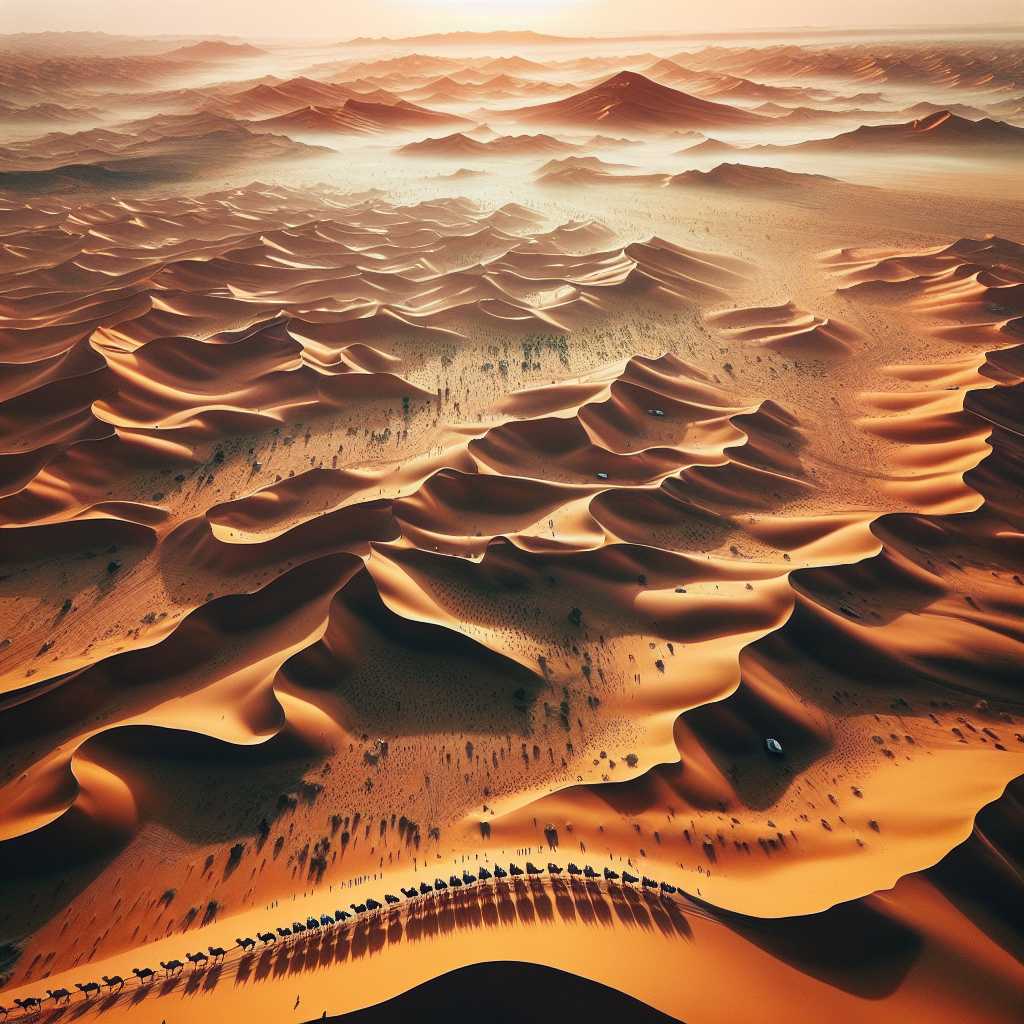Exploring Mauritania: A Land Shrouded in Desert Mystique and Cultural Richness
Mauritania, a country located in Northwest Africa, is enveloped by the vast landscapes of the Sahara Desert, Atlantic coastline, and rich cultural heritage. With its unique blend of Arab and African traditions, Mauritania stands as a sentinel on the edge of endless sands, offering a glimpse into a way of life that has stood for centuries, balanced on the crossroads of ancient trade routes.
Geography and Climate of Mauritania
Physical Landscape
Mauritania’s terrain is characterized mainly by flat arid plains which give way to the Saharan dunes in the north and east. The country boasts a considerable portion of the Sahara Desert, including the fabled Adrar Plateau and the dune fields of the empty quarter, known locally as El Ghayla.
Coastal Features
Along its western margin, Mauritania is bordered by around 750 kilometers of coastline along the Atlantic Ocean. Notably, the Banc d’Arguin National Park is a prominent coastal feature, serving as one of the world’s foremost sites for migratory birds and housing a richly biodiverse marine habitat.
Climatic Conditions
The climate in Mauritania can be very harsh, with extreme variations between daytime and nighttime temperatures. Most of the country experiences very low annual rainfall, leading to prolonged droughts. However, some changes have been noticed, including rare extreme weather events which are believed to be associated with broader patterns of climate change.
A Historical Canvas
Early Inhabitants to Colonial Rule
Tracing back to antiquity, Mauritania was inhabited by Berber and Black African people living along a series of fertile valleys known as wadis. Over subsequent centuries, it became a confluence point for diverse cultures, reflected today in the country’s ethnic tapestry.
European Intrusion and Independence
The scramble for Africa saw France seize control of modern-day Mauritania as part of French West Africa. It wasn’t until November 28, 1960, that Mauritania eventually gained independence from French colonial rule after years that sowed many challenges still pertinent to its contemporary society.
Contemporary Issues: Modern-Day Mauritania
Economic Structure
Despite having rich fishing grounds and an abundance of minerals such as iron ore, Mauritania’s economy struggles from the uneven distribution of these natural resources. Their extraction generates significant national income yet little is seen by way of trickle-down to weaker segments of society.
Sociopolitical Landscape
Governance in Mauritania has been shaped by waves of military coups —a factor that often undermines political stability. Furthermore, issues such as slavery (though officially abolished) and human rights abuses continue to cast shadows over the country’s bid for modernization.
Cultural Fabric: Society and Traditions
Ethnic Diversity
The population comprises various ethnic groups including Haratine (descendants of black Africans), Arab-Berbers (often called White Moors or Bidhan), and Sub-Saharan ethnic groups including Halpulaar (largely composed of Fulani), Soninke, and Wolof peoples.
Languages
Arabic is the official language and medium for governmental affairs. However, many inhabitants speak their local languages
The Diverse Cuisine
Mauritanian cuisine mirrors its cultural diversity; dishes often feature fish along with staple grains like sorghum and millet prepared uniquely among different communities.
Festivals and Music
Throughout the year, numerous festivals celebrate Mauritania’s Islamic heritage and its diverse ethnic roots. Traditional music forms remain integral to Mauritanian life—especially desert blues reflecting the depth of the nation’s soulful connection to its landscape.
Notes
*Image Description*
A breathtaking aerial view captures dunes stretching across Mauritania’s portion of the Sahara Desert with camel caravans visible amidst this vista reflecting traditional modes still in use; in the background lies one of the few oases that punctuate these vast arid expanses.
